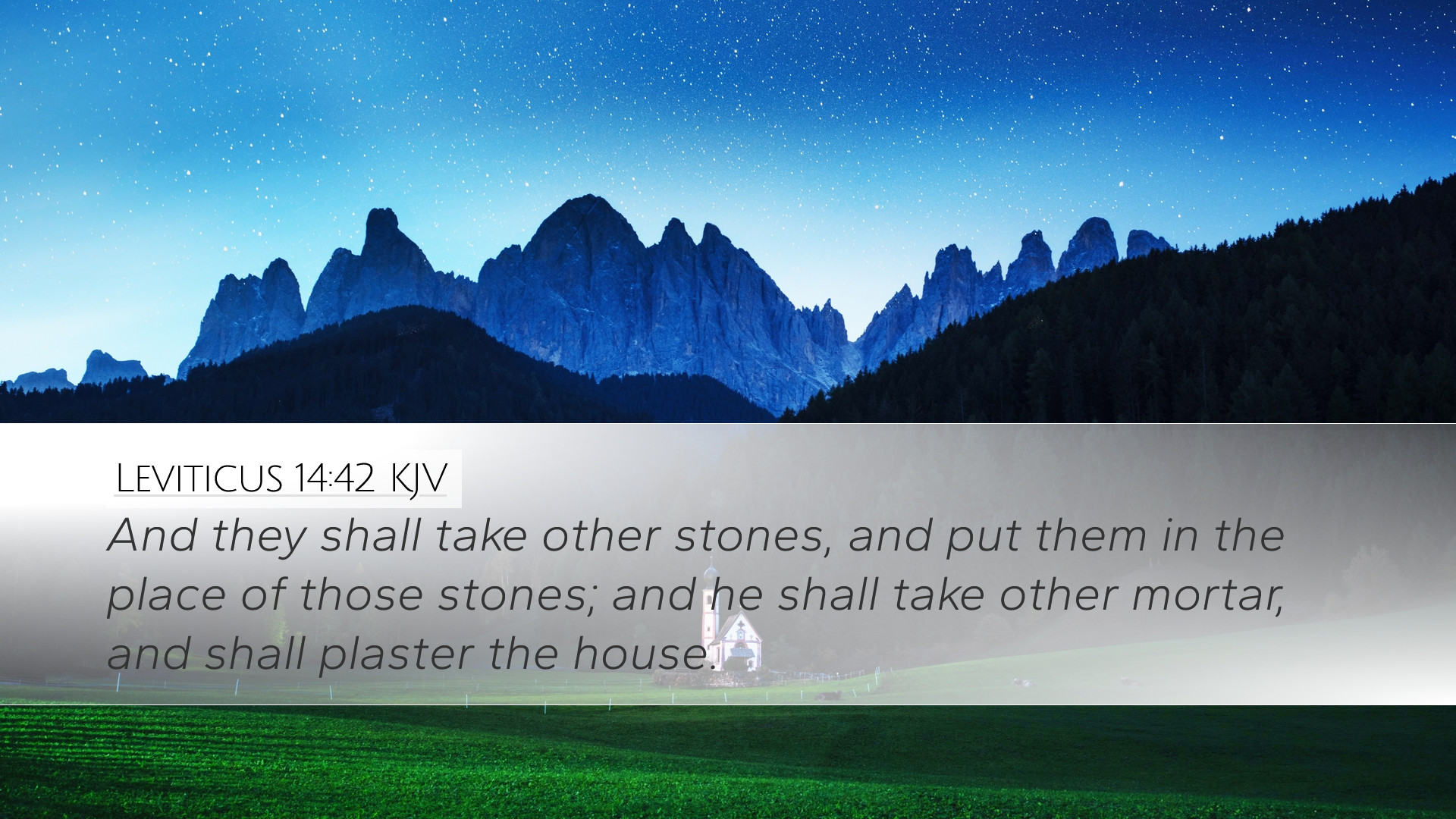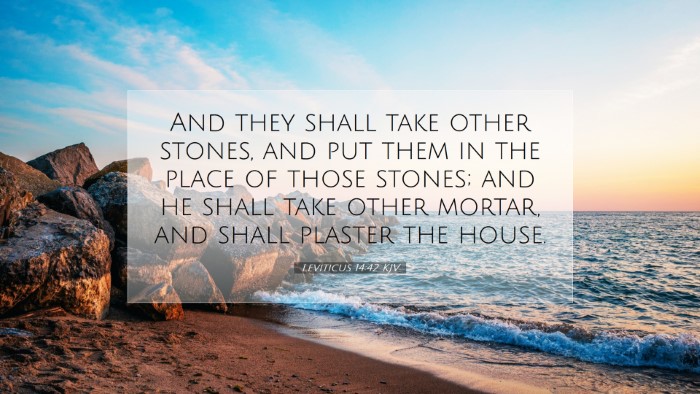Commentary on Leviticus 14:42
Verse: Leviticus 14:42 - "And they shall take other stones, and put them in the place of those stones; and he shall take other mortar, and shall plaster the house."
Introduction
The passage from Leviticus 14:42 addresses the necessary steps to purify a house afflicted by leprosy or a similar plague. This verse not only provides practical instructions but also embodies profound theological meanings pertaining to purity, restoration, and the communal aspect of holiness in ancient Israel.
Contextual Background
Historical Setting: The laws concerning leprosy reflect the ancient Israelite understanding of health, ritual cleanliness, and the holiness of the covenant community. Lepers, by definition, were considered unclean, and anything associated with them could also be deemed unclean.
Cultural Relevance: Homes in ancient Israel often represented the heart of family life and community. Therefore, a leprous house signified not only physical decay but also spiritual implications that affected the community's standing before God.
Theological Implications
The act of replacing the stones and mortar in Leviticus 14:42 conveys much more than mere construction; it symbolizes a deeper spiritual renewal.
- Purity and Holiness: Matthew Henry emphasizes that the act of removing contaminated materials reflects God's demand for purity and how He cannot dwell where sin exists. A house must be cleansed before it can be a place of fellowship with God.
- Restoration: Albert Barnes notes that the command to take "other stones" implies the possibility of restoration. God’s mercy allows for the house’s restoration, reinforcing the theme of hope in the face of defilement.
- Community Responsibility: Adam Clarke remarks on the proactivity required of the individual. The owner is responsible for ensuring that their home is free from leprosy, emphasizing personal responsibility in maintaining holiness among the community.
Detailed Exegesis
1. Replacement of Stones: The instruction to take "other stones" symbolizes a crucial act of change. The church must often remove aspects that do not serve its calling. Just as stones must be replaced, so must any ideology or behavior contrary to God's Word.
2. New Mortar: Mortar binds the stones together, representing unity and structure. Barnes elucidates that 'other mortar’ speaks to the new beginnings in relationships and communities. In spiritual terms, the fresh application of Jesus’ forgiveness binds us anew in unity.
Practical Application for Today
Pastors and theologians can draw several applicable lessons from this text:
- Personal Reflection: Believers are encouraged to examine their lives regularly, identifying areas that need spiritual renovation.
- Church Purity: Local churches must work diligently to keep the body of Christ holy by addressing sin within their community, ensuring that they reflect Christ's love and purity.
- Hope and Restoration: This verse assures readers of the hope they have in Christ. Just as leprous houses could be restored, so can lives ravaged by sin find renewal through Jesus' sacrifice.
Conclusion
Leviticus 14:42 serves as a metaphor for spiritual health and restoration in the life of the believer and the church. As future leaders, pastors, and scholars engage with this text, they may encourage their communities to seek purity, foster hope, and embrace the call to responsibility in maintaining the holiness of their spiritual dwellings.


